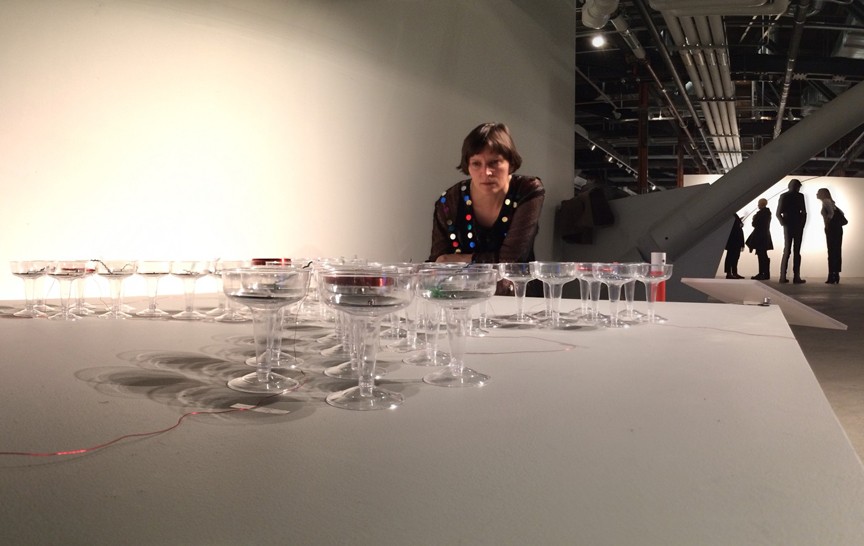Name: Cere Davis
Which came first in your life, the science or the art?
I started out as a scientist and engineer by education. I went into the computing field because it was interesting (enough) and it was a way to buy myself out of debt servitude. Eventually, once I felt that I had enough resources and time, I decided to (finally) start exploring my roots in the sciences and experiment with how to exhibit science in an artful engaging way. Kinetic Sculpture turned out to be an ideal fit for me and a perfect convergence of all of my various, seemingly disparate, interests.

Which sciences relate to your art practice?
As a kinetic artist, Physics is predominantly what I focus on. Right now, my methods of motion heavily utilize magnetics and electromagnetics. At some point, once I feel that this theme has run its course, I will explore other areas of science. I could see moving into a little bit of chemistry and biology in the future.
What do you use to create your artworks?
I use a lot of small hand jeweller tools, glues, experimental materials, magnets and electronics for the raw control of the motion itself. I also like to use some kind of fabric media to soften the “feel” of the piece and add a sense of extra dimensionality to the motion of magnets that otherwise only hold a rigid shape.

Artwork/Exhibition you are most proud of:
That’s hard to say. I feel differently proud of each piece as they represent my own evolution and ability to meet different kinds of creative challenges. I would say I am most proud of God’s Eye because it was an electromagnetic piece that I was able to scale to a large piece, which is very hard to accomplish in the field of kinetic art using the direct magnetic mechanisms that I am currently focused on (i.e. without the infrastructural use of motors, and rigid gears and shafts).

Is there anything else you want to tell us?
I specialize in science-art that shows the kinetic relationship between semi-chaotic animal like free motion of interdependent objects generated through a single simple mechanism, constrained through the use of unique physical shapes and media. I tend to use mechanisms to drive motion without the use of predictable electric motors, and rather choose to structure the motion of objects through direct material and structural design choices, which create a more natural kind of animal-like motion.
I am attracted to bridging two very disparate artistic fields: fiber art and kinetic sculpture as a means bringing more life-like qualities to the finished work. The fundamentals of kinetic sculpture often rely on rigidity as a necessary consequence of their design but this often results in a reduction in dimensionality and a lack of life-like visual softness in the sculpture piece. I am interested in experimenting with adding other dimensions to kinetic sculpture through the creative integration of softer fiber media.
Share this Post

